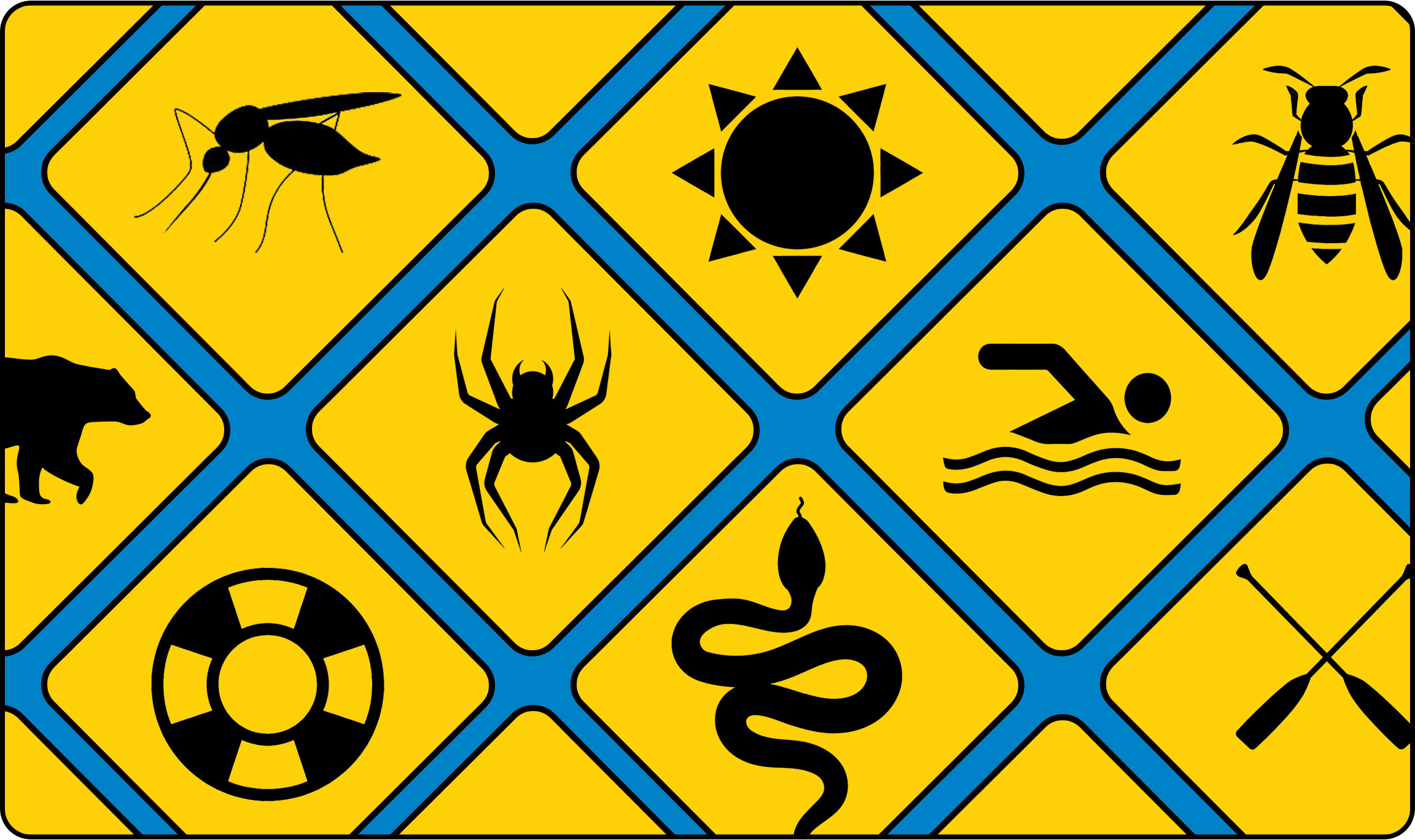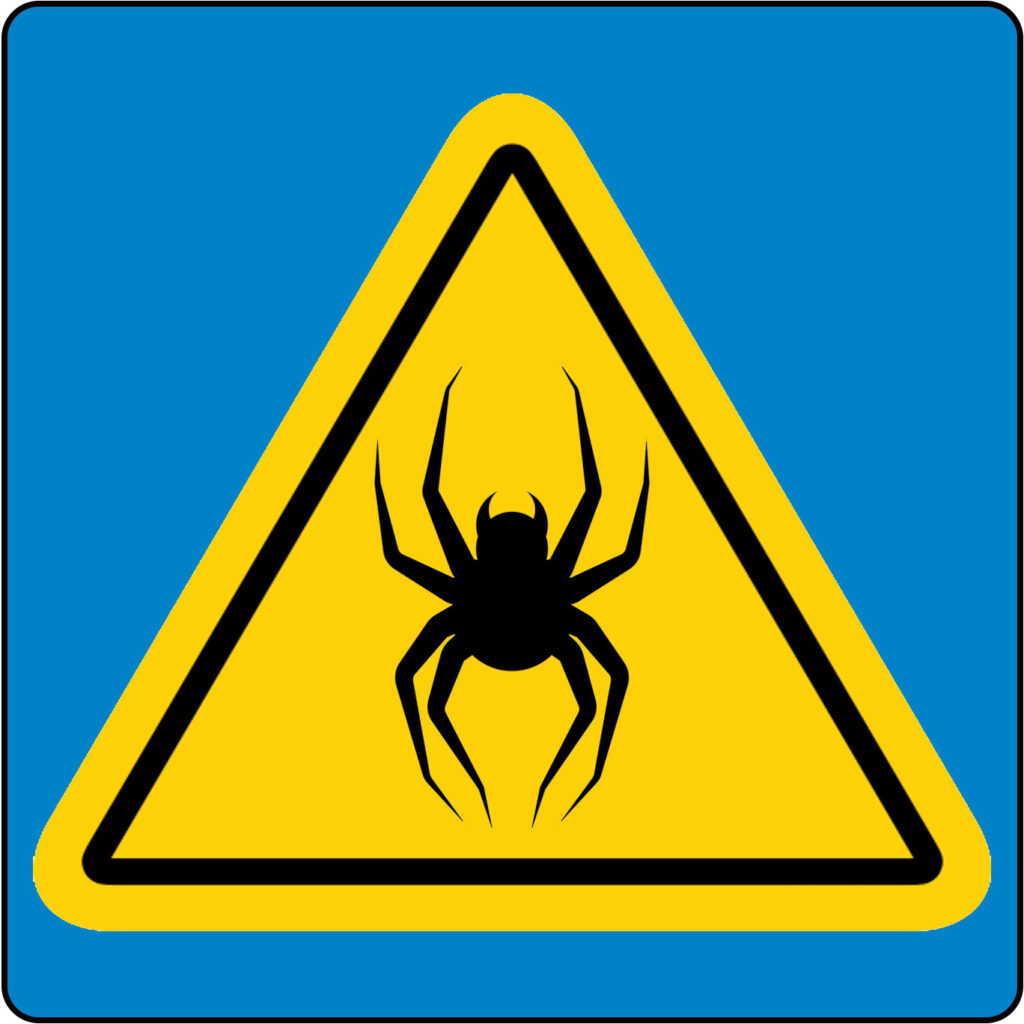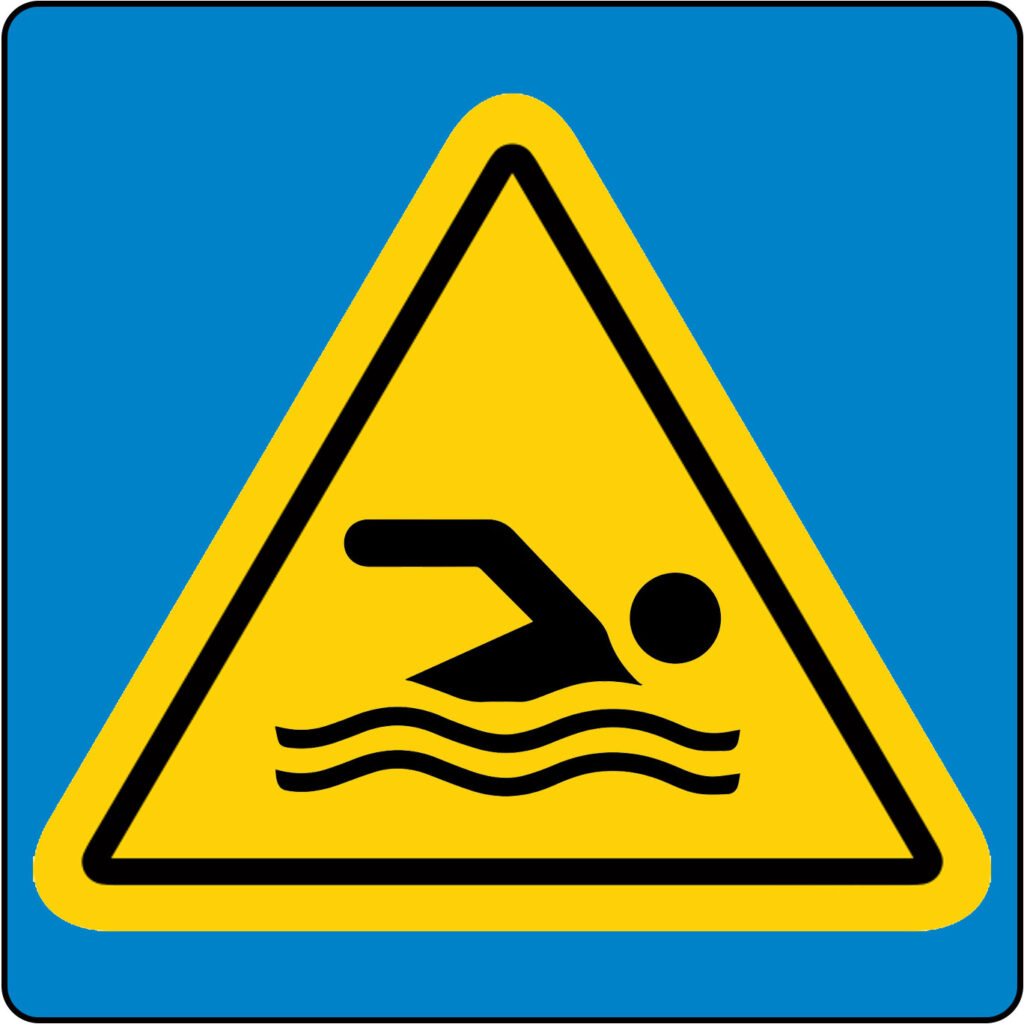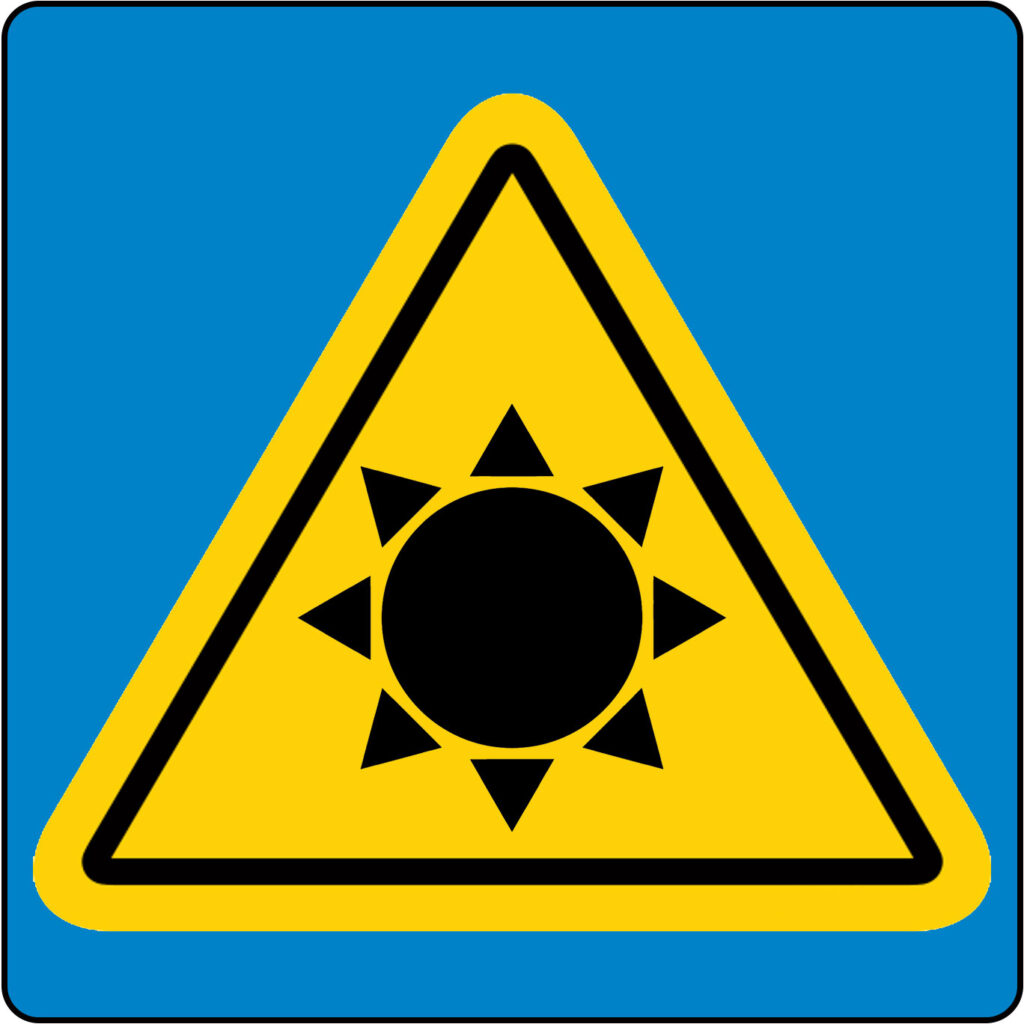Outdoor Safety Tips

July 23, 2025 by Keely Knopp
With its scenic ridgetop vistas, lush green forests and cool, secluded streams, Western North Carolina is an outdoor adventurer’s dream. But spending time in nature comes with inherent risks — from insect bites and snake encounters to slippery rocks and swift-moving water.
Whether you’re hiking Pisgah National Forest, tubing down the French Broad River, or picnicking at the Arboretum, keeping yourself safe (and knowing what to do if something goes wrong) is incredibly important.
Below are some of the most common season-specific issues we see at Mercy Urgent Care, along with tips to help you prevent or respond to them. Click the links below to jump to the specific issue you want to learn more about.
Mosquitos, ticks, biting flies & chiggers
Venomous spiders & wasps
Snakes
Water safety
Sun & heat protection
Bites and Stings
Insects may be small, but they wield the power to make you miserable for days — or, sometimes, much longer. In addition to the itchy welts they leave behind, mosquitos, ticks and fleas can spread diseases like Zika, West Nile virus and Lyme disease, and venomous insects like wasps and certain spiders can cause immense pain or even deadly reactions.
Snakes, on the other hand, tend to keep to themselves, but when startled or stepped on, they may strike. Most snakes in the region are non-venomous and pose little threat, but copperheads and timber rattlesnakes are common, and their bites can be serious. While rarely fatal, a venomous bite can cause intense pain, swelling, and tissue damage — and always warrants prompt medical attention.
Mosquitos, Ticks, Biting Flies & Chiggers
Bite Prevention:
- Use an EPA-registered insect repellent containing DEET or picaridin.
- Spraying skin and clothing from a distance of about 6-8 inches in a slow, sweeping motion.
- Ensure coverage around common bite areas: cuffs, waistbands, socks and other areas where clothing is tight against the skin.
- If using both, always apply insect repellent after sunscreen.
- Avoid brushy areas with high grasses, accumulated leaf litter or while walking off-center of the path.
After spending time outdoors, especially when in tall grasses or wooded areas, thoroughly check people, pets and packs for ticks, paying close attention to anywhere that the skin naturally creases or overlaps.
Remove ticks that are embedded in the skin as quickly as possible:
- Using tweezers, grasp the tick as close to the skin’s surface as possible.
- Pull it away from the skin with steady, even pressure.
- Dispose of ticks by flushing them down the toilet, wrapping them tightly in tape or putting them in alcohol.
- Thoroughly clean the bite area (and your hands) with soap and water, rubbing alcohol or hand sanitizer.
- See your doctor if you develop a rash or fever within the following days or weeks. Lyme disease is a common tickborne illness that can present with flu-like symptoms, including muscle aches, joint pain, fever and a bull’s-eye rash.
Venomous Spiders & Wasps
Do Not Disturb: In WNC, black widow and brown recluse spiders are the venomous arachnids to look out for. In the wild, both spiders build their homes in dry, dark places like under rocks or in tree stumps, but they are also found closer to home in wood piles, sheds, garages, unused pots and gardening equipment and in cluttered basements and attics. Both are more active at night, retreating to their habitats during the day. Recluse bites are incredibly rare, as they are not aggressive and only bite when threatened, but female black widows may bite if disturbed. When grabbing firewood or cleaning out sheds, garages, basements and the like, wear gloves and boots to protect against any surprised spiders you may encounter.
If Bitten: Most nonvenomous spider bites will heal on their own, but if the culprit biter is identified as a black widow or brown recluse, seek immediate care at a hospital. While rarely fatal, serious complications can occur.
Symptoms of venomous bites include:
- intense pain during or after the initial bite
- aching at the site or in the surrounding muscles
- blistering, swelling or bruising at the bite
- difficulty breathing
- droopy or swollen eyes
- headache
- increased saliva production
- nausea and vomiting
- painful muscle cramps or stiffness in the stomach, shoulders, chest and back
- profuse sweating
- itchy rash
If you suspect you’ve been bitten by a spider and develop any of these symptoms — or if the bite becomes a wound, lesion or hot to the touch — seek medical attention as quickly as possible.
Stinging Insects: When spending time outdoors, avoid wearing perfumes, lotions and other scented products that commonly attract bees and wasps. Stay calm and avoid swatting at any wasps you encounter, as this can provoke them to sting. If stung, remove the stinger (when applicable), apply a cold pack and monitor for signs of allergy, such as hives or other rashes, swelling and difficulty breathing.
Snakes
Knowing how to avoid snake encounters, and what to do if you or someone else is bitten, can make all the difference. Thankfully, the most common native species in the WNC mountains are eastern rat snakes and other harmless snakes. Of course, be wary of any snake you encounter, as even nonvenomous snakes may bite if threatened.
Avoid Encounters:
- Stay on well-worn trails, when possible.
- Make noise when walking through tall grass or brush.
- Carry a stick or hiking pole to move brush aside before stepping forward.
- Never put your hands or feet into rock crevices, hollowed trees or other spaces that you cannot see.
- Always check the ground ahead before stepping over fallen trees or rocks.
Copperheads are the most common venomous snakes in North Carolina, yet they are still relatively rare. Their heads are, appropriately, a coppery brown with a distinct V-shape on the forehead, and their bodies are usually brownish in color with a repeating hourglass pattern, which may look like a Hershey’s Kiss from the side. Adept at blending into their environments, these snakes are often hard to see, but are very fast and fairly aggressive. They may give a “final warning” when threatened, quickly wiggling their tails in the dirt or leaves to mimic the sound of a rattlesnake.
Timber rattlesnakes are more varied in color, but can be identified by the dark bands that cross their lighter skin, as well as the rattles at the ends of their tails. They have large, triangular heads and large eyes with vertical pupils. While more venomous than a copperhead, these snakes generally try to avoid human encounters and only bite when provoked or in imminent danger — and are likely to warn you of their presence with a loud, distinct rattle of their tails. If seen (or heard), give it its space, as it’ll likely leave on its own.
If Bitten:
- Stay calm.
- Remove any jewelry or constrictive clothing from the area around the bite.
- Elevate the bite at or above heart-level to slow the spread of venom.
- If able, wash the area gently with soap and water.
- Do not use outdated first aid remedies: Applying a tourniquet or ice or attempting to cut the wound and/or suck out the venom will only make the situation worse.
- If you suspect you were bitten by a copperhead, rattlesnake or other venomous snake, or if you are unsure, the bite should be treated as a medical emergency.
- Do not attempt to catch or kill the snake to identify it.
While fatal bites are very rare, it is important to seek immediate help to prevent complications like nerve or tissue damage. Call 911 for help, and call Poison Control at 1.800.222.1222 for advice, if needed.
Water Safety
Whether you’re tubing, swimming, hiking or paddling, it’s important to understand the inherent risks that come with rivers, creeks, lakes and waterfalls. In fact, on average, waterfalls in WNC claim the lives of two to three people per year. Whitewater Falls in Transylvania County is one of the deadliest in the region, causing at least 15 deaths in the last 30 years.
Respect the Rapids:
- Do not climb, stand or sit on wet rocks, especially near waterfalls or fast-moving streams. Avoid jumping from rock to rock when crossing streams on the trail.
- Always wear a properly fitted life jacket when swimming, paddling or boating. Be aware that “floaties,” arm bands and water wings do not reliably prevent children from drowning and can easily slip off.
- Never dive into unfamiliar water, where rocks or other debris may lurk below the surface.
- Water recreation and alcohol do not mix: Avoid alcohol when swimming or boating.
- Keep children within arm’s reach at all times. For groups of children, a responsible adult should be on water safety duty at all times and free of distractions. Take turns, if necessary, and conduct headcounts often.
- Never swim alone, and always let someone know your plans. The latter goes for other outdoor recreation activities, as well.
- If caught in a swift current, do not fight or swim against the flow of water. Instead, swim across the current until reaching slower water. Do not try to stand up. If unable to free yourself from rapid water, lay on your back with your toes pointed up and your feet headed downstream.
Learn to recognize the signs of drowning: It’s never as obvious as it seems. A person who is drowning is often silent and will not be waving or shouting for help, as all of their focus is on breathing. Their head will often be low in the water, with their mouth at or under water level. You may see or hear them taking rapid or labored breaths or gasping for air. Call out to the person, and listen for a response. If they do not reply, they could be in distress.
How to Help:
- If you suspect someone may be drowning, the best way to help is to throw a lifesaving device into the water where they can reach and pull them to safety. Entering the water without a floatation device should be a last resort, as panicked swimmers can end up pulling rescuers underwater. If the person is not responsive and not breathing after being pulled from the water, begin CPR immediately: Check for breathing, perform chest compressions and deliver rescue breaths.
- Monitor anyone who was rescued from near-drowning for symptoms of secondary drowning, like difficulty breathing, chest pain or confusion. These symptoms can appear as late as 48 hours after the incident and should be treated as an emergency.
Sun & Heat Protection
When the body begins to overheat, it sends out signals to let you know. Early symptoms of heat-related illnesses include fatigue, heavy sweating, headache, dizziness, nausea and a high pulse rate. Patients may begin to feel faint or weak, develop muscle cramps and notice clamminess of the skin.
Knowing and watching for the symptoms of heat-related illnesses is part of the prevention process, but there are ways to avoid feeling ill altogether:
- Stay well-hydrated (with the right beverages). Drink plenty of water, even if you do not feel thirsty — and avoid caffeine, sugary drinks and alcohol.
- Wear the right clothing and protect against sunburn. It’s important to minimize the skin’s exposure to the sun, but it’s also vital to allow it to breathe. Wear lightweight, loose-fitting clothing, sunglasses, bandannas, wide-brimmed hats and sunscreen with an SPF of at least 30.
- Pace yourself or change your schedule. Whether you’re working or adventuring, allow yourself frequent breaks in the shade or in air-conditioned buildings. Taking breaks allows the body to recover and cool itself between bouts of heat exposure.
- Take note of personal factors and medication side effects. Unfortunately, some people are more susceptible to heat illnesses than others, and it’s especially important for those individuals to recognize the increased threat. Small children and adults over 65 have an increased risk, as well as those with chronic conditions.
Read more sun and heat-related tips here.
Nature may be unpredictable, but with the right precautions — and knowing when to seek help — you can stay safe while enjoying the outdoors this summer. And if you or a loved one needs care after a non-life-threatening bite, sting, fall or heat-related illness, Mercy Urgent Care is here to help.




